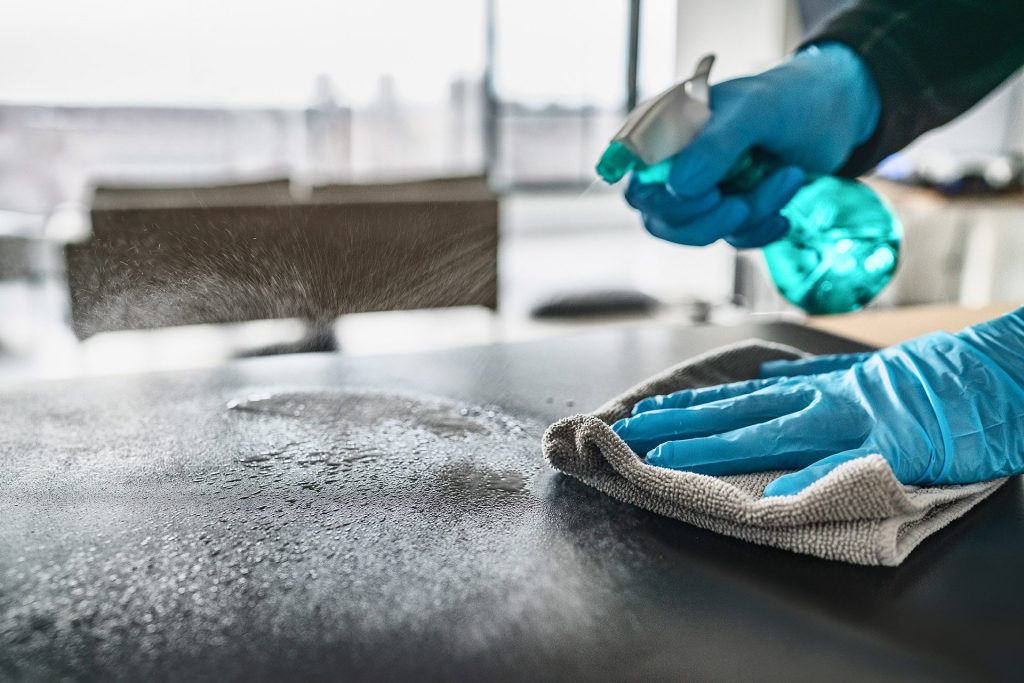Surface Appeal
MARTHA STEWART LIVING, OCTOBER 2008
It’s not surprising that tile, which is as durable as it is beautiful, is a popular material for kitchens and bath spaces. But the job of cleaning tiles — and the maze of grout that keeps them in place — is decidedly unpopular.
In an effort to restore dingy surfaces to like-new brightness, home keepers are often tempted to use cleansers and tools that are tougher than necessary, such as bleach and stiff brushes.
But strong-arm cleaning tactics often create more problems than they solve. They can scratch tiles and damage grout, creating conditions that dull surfaces, invite stains, and make maintenance difficult in the long run. Our gentle cleaning techniques, outlined below, are suitable for ceramic, porcelain, terra-cotta, and glass tiles.

The worst grime actually tends to accumulate on the grout and not the tiles, which are naturally more stain-resistant. Typically made of cement, sand, and polymers, grout has microscopic pores that readily trap dirt. The dirt, in turn, is a magnet for mold and mildew, which lead to discoloration.
But despite the challenges, keeping tile and grout clean is a fairly straightforward task — one that might be compared to taking care of your teeth: A little preventative action and regular cleaning will keep them looking good.
Tools and Techniques
pH-neutral cleaner: Less harsh than most cleaners. An essential.
Squeegee: Prevents mold by wiping water off surfaces. Use daily. Alkaline cleaner and grout brush: Good for removing soap scum and mildew.
Grout poultice and restorer: For erasing deep stains and restoring color. Visit Marble Cleaning Products for their Grout Cleaner and Restorer product.
Grout sealer: A preventative treatment that protects grout from stains. Try the Grout Sealer and Protector from Marble Cleaning Products.
Preventative and Daily Care
Tile: The moment a spill occurs, wipe it up with a damp cloth to keep stains from setting. Wipe down tiles in the bathroom with a squeegee after showers. This will keep soap scum, lime deposits, rust stains, and mold to a minimum.
Grout: Make it stain-resistant by applying a penetrating sealer (such as TileLab grout sealer) that resists water- and oil-based substances. Reapply sealer periodically. This could be yearly but depends on the brand and the wear and tear the surface receives; refer to the bale on the sealer for instructions.
Weekly Cleaning
Tile: Sweep or vacuum floors to remove dirt and grit, which scratch surfaces. Sponge or mop tiles with a pH-neutral cleaner, such as Neu Organics’ all-purpose cleaner, and warm water. Wipe with a clean, dry cloth.
Grout: Mold feeds on dirt, so get it where it gathers. Use a grout brush to clean out joints and corners. To prevent discoloration, clean regularly with the same pH-neutral cleaner used on tile.
Deep Cleaning (As Needed)
Tile: Scrub soap scum with an alkaline cleaner (most all-purpose household cleaners are alkaline), warm water, and a soft-bristle brush. Rinse well with clean water, and towel dry.
Grout: Clean off soap scum or mildew using an alkaline cleaner and a grout brush. Scrub mold spores with a grout brush. (To prevent recontamination, discard brush after use.) To treat stubborn stains or discoloration, use a poultice and a grout restorer. Always test products on an inconspicuous spot first.
For the Best Results
Tile: Always follow the manufacturer’s instructions on the label of any cleaning product; using more cleaner than is recommended or sidestepping other directions can result in dull, dirty tiles.
Grout: When sponging or mopping, change the wash water and rinse water frequently to avoid redistributing dirt. (If there’s a large area to cover, consider using a wet/dry vacuum, which extracts dirty water efficiently.) If grout is crumbling or powdery, there’s no quick fix. It’s a sign that it’s time to regrout.
Products to Avoid
Tile: Just as abrasive cleansers can damage tiles over time, so can certain cleaning tools. Avoid equipment that can scratch, including steel wool, stiff brushes, and mops with metal parts.
Grout: Steer clear of lime and mineral scalers and white vinegar, which damage grout. Oil soaps and pine cleaners will leave a sticky residue on tile. Fight the urge to use bleach or ammonia, too; they won’t get rid of mold, and they will harm grout and tile.




